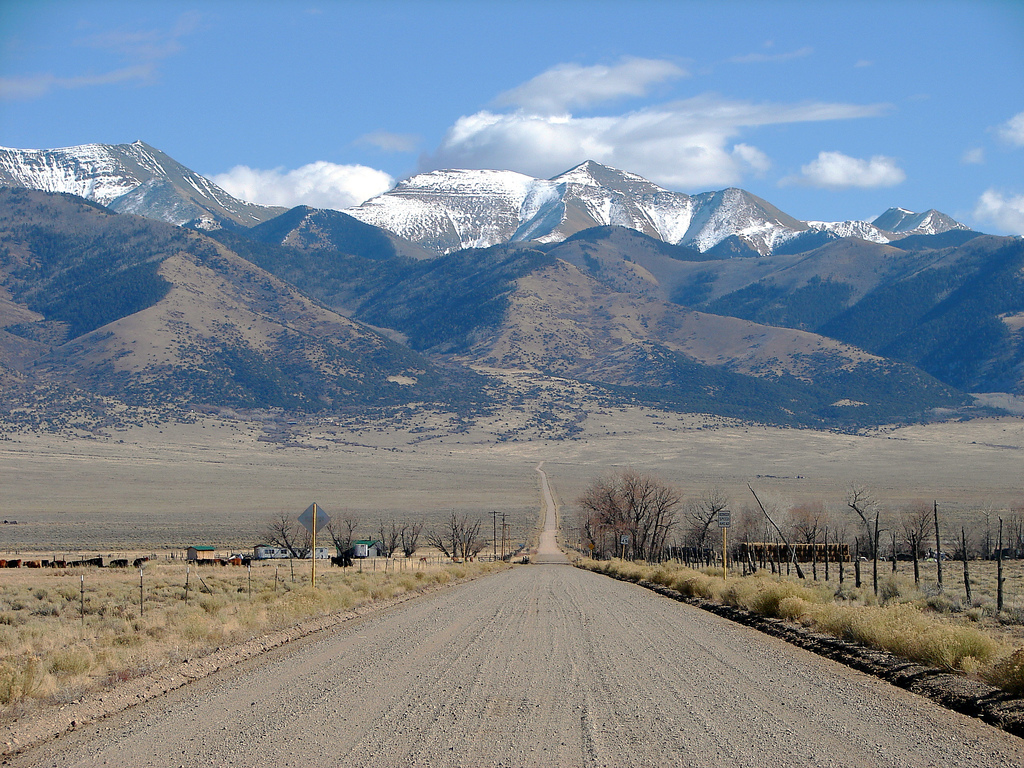San Luis Valley, Colorado: Agriculture and Climate
Nestled between the Sangre de Cristo and San Juan mountains at the start of the Rio Grande, there is the San Luis Valley. What you may not know is farming is a significant income source in the San Luis Valley in Colorado. You will quickly learn about its strong heritage and family-owned farms when you enter this small Colorado town. New farming techniques have been introduced with each generation to improve this thriving agricultural economy.
The valley is most known today as the site of the Great Sand Dunes, although the high elevation, fertile soil, and snowmelt from neighboring Blanca Peaks make it ideal for food production.
The main crops farmed in the valley are crops of lettuce, carrots, native hay, barley, wheat, potatoes, spinach, and alfalfa. Coors Beer, a well-known American beer, uses barley from San Luis Valley as its main ingredient.
The Centennial State
Colorado is America’s second-largest potato grower, with the San Luis Valley accounting for 92 percent of all potatoes farmed in the state. Potatoes are known for their high fiber content, which aid’s in keeping you fuller for longer. By keeping cholesterol and blood sugar levels at healthy levels, fiber can help avoid heart disease. Potatoes are also high in antioxidants, which help prevent diseases and provide vitamins to aid body function.
However, a fun fact n known by many, potatoes are not just a pantry favorite. This versatile crop has many benefits outside of being a great addition to your meal. Potatoes soothe burns, remove rust, create art, and other purposes.
Favorable Climate Conditions
Warm, sunny days with temperatures as high as 82°F and cold nights characterize San Luis Valley’s spring and summer seasons, making for ideal growing conditions. Warmer air rises on the sides of the mountains as the cold air lowers into the valley, trapping the cold air against the valley floor. The lower temperature also helps to keep potato skin smooth and decreases second-growth roughness. San Luis Valley, an alpine desert, is known for its frigid winters that eliminate or reduce pests and disease, lowering the need for pesticides.
Fertile Desert Soil
The valley’s soil is a loose-packed loam that is rich in nutrients. Because potatoes grow in the ground, the soil must be able to change easily to allow for the growth of the potatoes. Technically a desert, the San Luis Valley receives fewer than 8 inches of precipitation each year, and irrigation water cultivates all crops.
Underground water and river water supplied by the Rio Grande and others in the region irrigate the crops. One of the largest aquifers on the U.S. continent is beneath the valley floor, fed by plentiful snow in the surrounding mountains. However, this aquifer is still second to the Ogallala Aquifer, covering at least eight states, from Texas to South Dakota. Almost all producers in the San Luis Valley employ the latest center pivot sprinkler, which allows them to adjust irrigation.
Agriculture History of San Luis Valley
Russets, Reds, and Yellows are the most common potatoes grown in Colorado. This state is home to 100 different types of delicious potatoes. Russets are produced in more significant quantities than any other kind and are used in baking, frying, and mashing. Reds are the most well-known of the newer generation potatoes, while Yukon Gold, a yellow potato with a creamy texture, is quickly becoming an American go-to. Purple Majesty is a specialty potato with a vivid purple color inside and out that doesn’t fade when cooked.
The magnificent San Luis Valley is the world’s highest and largest commercial agricultural valley. The San Luis Valley, at 7,600 feet, is vast and flat, with a breadth ranging from 20 to 50 miles and a length of around 100 miles from north to south.
Agriculture comes second to manufacturing when it comes to Colorado’s largest industries. Over the years, crops have changed to adapt to demand. Although changes happened, Colorado’s agricultural history is evident and is likely to stay this way for generations to come!
The San Luis Valley in Colorado is noted for its potato production and thrives on its agricultural roots. Cool-weather crops like lettuce, spinach, and quinoa thrive in this alpine desert. Even though ranching is not very popular here, you may be able to find free-range chickens, Rocky Mountain White Tilapia, and Bison.
Harvesting and Storage
Potato harvest season begins in September, and around 98 percent of the product goes in storage before being shipped to various locations.
The fields of potato vines are green with white, blue, pink, red, or purple blossoms before harvesting. The vines are left to die before harvesting, which makes it easier to harvest. Trucks transport potato loads to a central location for sorting, measuring, and cleaning.
In the San Luis Valley, about 22 leading potato warehouses pack and ship potatoes to their final destinations. Keeping the potatoes alive and slowing the natural breakdown process is crucial to benefiting financially from the harvest. Storage facilities carefully keep the produce fresh. The storage space must be dark, adequately aired, and kept at temperatures near 39°F for long-term storage. Potatoes kept in storage can last up to 12 months under ideal circumstances, attainable in commercial warehouses.
Thank you for taking the time to read about the San Luis Valley and what makes it special! We currently have properties available in this amazing space of land. Check them out here. We would love to help you make your land dreams come true!


